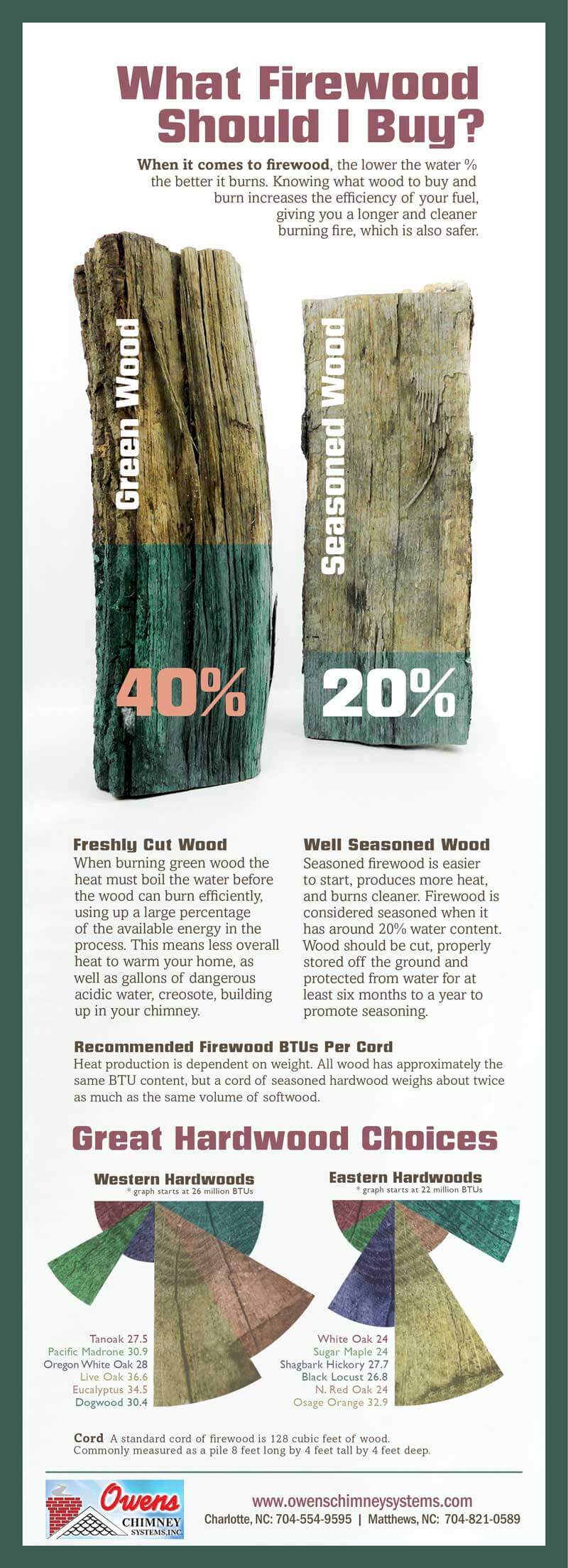Whether you burn wood occasionally or use it all year round as your primary source of heating, having a fire that burns hot and clean is what matters most. Unfortunately, there is a very serious general misconception about what type of wood burns the most effectively. This misconception yields a staggering amount of wasted wood, wasted energy (heat / light), wasted effort, and wasted money. Considering that many people choose to burn wood to cut back on the cost of winter heating bills, this is definitely a problem we want to fix.
The Misconception:
A newly felled tree, or logs from a newly felled tree, will make good firewood.
The Truth:
Using logs from a newly felled tree as firewood is very ineffective and wasteful. Seasoned firewood (dry) will almost always burn hotter, cleaner, and brighter than fresh / unseasoned firewood (green).
If you’ve ever had trouble starting a fire or keeping it going, chances are you were using unseasoned wood.

Unseasoned firewood smolders, generates very little heat or light, can be very smoky, and is generally ineffective overall. As up to half the weight of freshly cut wood is from stored water, a majority of a fire's energy is wasted trying to evaporate the retained liquid rather than to generating heat and light. What's worse is that burning green or partially-seasoned wood in fireplaces and stoves produces a low temperature, slow burning, smoldering fire that releases significantly more creosote, over a longer period of time, than fires using seasoned wood.
Creosote, if allowed to build up in large enough quantities inside your chimney, is highly combustible and can lead to chimney fires of volcanic proportions. (Be sure to have your chimneys inspected and cleaned by a professional sweep at least once a year!)
The key to getting the most from your money and the safest, best quality fire is burning seasoned wood.
Important Note: Wood, even if taken from trees that have been standing-dead, felled, or storm-downed for years, will not begin to season until it's cut up, split, and left for the wind and sun to dry out in a proper woodpile. The drying time depends on the wood species; some hardwoods require a year or two to season while some softwoods only take 6 to 8 months, but all properly seasoned firewood has a water content of 20% or less; the drier the wood the better it burns.
Hardwoods, such as oak, madrone, and walnut, typically support a more balanced, longer burning fire than softwoods like fir, pine, and cedar - which tend to burn much hotter and faster, making it great for kindling. This difference in burning is mostly due to the fiber composition of the wood itself.
This means that a stack of hardwood contains more fuel than an identically sized stack of softwood. Even still, you will get a more efficient fire from burning a properly seasoned cord of softwood than a cord of green hardwood. Using seasoned firewood is the only way to ensure you'll get the most out of your fire.
Tips for Buying Seasoned Firewood:
- When you purchase seasoned firewood, it is important to note that wood is sold by the cord or fraction of a cord.
- A cord must legally be 128 cubic feet of wood, and is often stacked in a pile 4 feet wide, 4 feet high and 8 feet long, although it can be stacked in other configurations.
- Perfectly seasoned firewood weighs much less than green wood of the same type and is usually weathered or grey in appearance and the bark is loose - if it hasn't already fallen off in part or whole.
- It usually has little checks or cracks throughout the grain at the ends.
- It should make a hollow sound, similar to a baseball bat, when you knock two pieces together.
Take a look at the infographic below, from Owens Chimney Systems, Inc., to get a great visual of why seasoning is so important!

